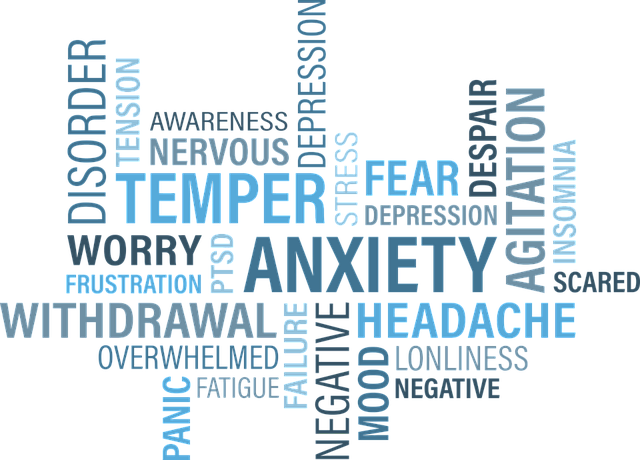Living with a chronic Illness can be hard, plain and simple. Living with an invisible illness, one that causes chronic pain, is harder. It has become such a common practice for people to quickly judge another person based on their condition or based on their use of narcotic pain meds. It has even become true within our healthcare system and within the government. Sadly it is not uncommon for a patient to be looked upon as an “addict” simply because of a medication that they take. Much of this has happened in response to the media coverage of the Opioid Crisis and how the government is handling the crisis. There isn’t a day that goes by that the media doesn’t cover some kind of story on addiction or the aforementioned crisis. What they don’t often show are those who have turned to suicide because of the changes that have been made, or those who don’t look for the next high and only take pain medication because it is necessary for them to be able to function. Due to the rise in narcotic abuse and the coverage it is getting in the media it seems it is only those who really need narcotics are the ones being punished.
Most people do not understand chronic pain or chronic illness for that matter. They don’t understand that just because a person looks “normal” that they may be fighting a daily battle inside. Most don’t understand the conditions that cause chronic pain, like Lupus, Multiple Sclerosis or Fibromyalgia. Most people don’t understand the people who live with these conditions. When you live with these, or other chronic conditions, the pain you feel every single day can be INTENSE. The pain can make every small task seem so much more difficult. These conditions can also make it hard to get out of bed at times. In all honesty it would be hard for anyone to understand these conditions unless they themselves suffer or they have someone close to them that deals with chronic pain.
According to the CDC there are approximately 50 MILLION Americans who live with chronic pain. Of that number approximately 8%, or roughly 20-25 million Americans, are living with what is deemed high-impact chronic pain. This is defined as pain that limits life or work activities on most days or every day in the past 6 months.
The aforementioned article shows that a HUGE number of people are living with a condition that impacts their everyday life. That being said it is reasonable to assume, based on those statistics, that most of you reading this article probably have someone in your family or close group of friends who is impacted by chronic pain. However, chances are you don’t know because they are afraid to share their story. So many people are terrified to admit they deal with chronic pain, especially if it requires some sort of medication to help them be functioning adults. This is solely based on the worries about how others will perceive them. They are concerned that they will be looked down upon or treated like someone who is abusing drugs. Chances are many of those same people who are afraid to tell their story to those closest to them have also face judgment from medical professionals. Sadly you also probably know of someone that has been forced to taper their medication dose or been forced off them altogether due to the work that is being done by law makers.
It is interesting to see that the CDC has said in the years between 1999 to 2010 Opioid prescriptions QUADRUPLED. Naturally many law makers feel that the number of prescriptions in 1999 was correct and there is no reason that the number of prescriptions should not have risen like it has. Most of those thoughts and feelings are due to the fact that they don’t understand chronic pain or the conditions that cause them. While there may be some validity to the thoughts that prescription rates shouldn’t have increased as much as they did, a person also has to consider how medicine has changed in those years along with the amount and kind of research that has changed. That being said it has also been shown through research that pain was vastly untreated in the 1990s. This shows that the increase was not all improper. The National Center for Complementary & Integrative Health recently released a study that was completed by The Medical Expenditure Panel Survey (MEPS). This study showed that the number of American adults suffering from at least one painful condition increased substantially from 120.2 million in 1997 to 178 million in 2014 – about 33.5 percent of the adult population. You have not heard about this in the media. They have not shared the fact that more and more people are dealing with chronic pain every year.
We all understand the need for better control over opiates. We get that. We also know that some physicians have improperly prescribed narcotics. However, the new guidelines are not truly helping the problem. While the changes may help get rid of the doctors that are over prescribing, they are hurting those who actually need the medications. Thousands and thousands of people across the country are being forced to taper their pain medications to a fraction of the amount they are used to. They are also being denied pain medication all together. An online poll done by Politico had hundred of responses from patients who had been forced off their medications despite having been on them for years.
The call for more strict guidelines is currently causing more problems then good. It seems like every week we hear the story of a person whose doctor cut their pain medications or stopped prescribing at all, causing the patient to commit suicide. A story published by Fox News states that the CDC does not have (or may not be releasing) the exact numbers of those who have committed suicide due to being refused their meds. The article did say however, that every doctor they spoke to stated they knew of 1-6 patients who had committed suicide because of the new opiate guidelines. It does not say how many providers they spoke with, but no matter, this number is too high. Dr Thomas Kline published an article in May of 2018 with the names and stories of FORTY people who committed suicide due to being forced to dramatically taper or completely come off the medications that were the only reason they could function. 40 is too many. This shouldn’t be happening. Physicians across the country are taking the new Opioid guidelines to extremes and because of that people are ending their lives because they don’t feel there is any other option.
To those who don’t suffer with constant pain, suicide may seem extreme. Until you have lived every day of your life in constant pain you will never totally understand. You will never understand having to stay in bed for days at a time because of pain. You will never understand how doing simple tasks like vacuuming or dusting can cause you to feel like you have been run over a bus. You will never understand the sadness that many of those who live with chronic pain feel because they can no longer do “normal” things. Above all you will never understand how awful it feels to have people look at you and pas judgement on you simply because of a medication you take. Having healthcare providers, pharmacists or anyone else look at you like you are an addict is something no one should ever deal with.
There has to be a better way to handle the Opioid Crisis. There has to be a better way for physicians to feel safe enough to prescribe the medications that their patients need. There has to be a better way to help those with chronic pain to taper without giving them no better option other than suicide. We all understand that there is a problem with opiates in the country. When it becomes the norm to see in the news that someone has ended their life due to forced tapering, it has gone too far. The only way we will ever change what is going on is to get in contact with your local legislators. Tell them your story, give them a face to put with the issue. We have to try to help them understand what it’s like to live with constant pain. We have to help them understand that forcing tapers or cutting meds all together is NOT the answer. Most of all we have to continue this fight for those who could no longer fight. So do your part, get out there and contact your legislators! Do your part to help those who can longer speak for themselves.
**If you would like more information on living with Pain, what is being done to help those living with chronic pain or on how to get involved with advocacy with advocacy work for those with chronic pain please check out The US Pain Foundation.
With Love,
Amber







God bless you, Amber.
Thank you
GREAT article. Allllll of this is so true!
@dSavannahCreate from
<a href="http://dsavannah.com/blog/">dSavannahRambles</a>